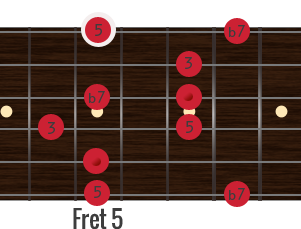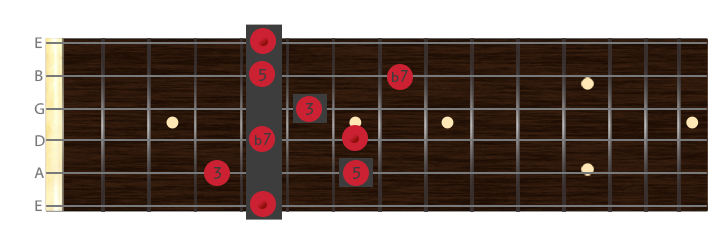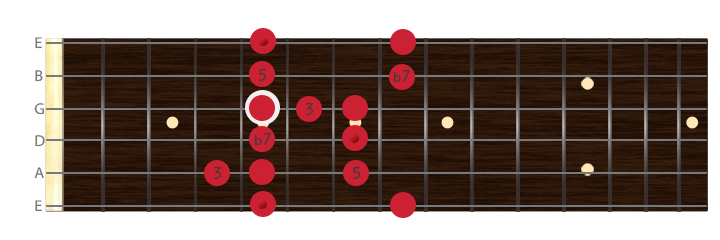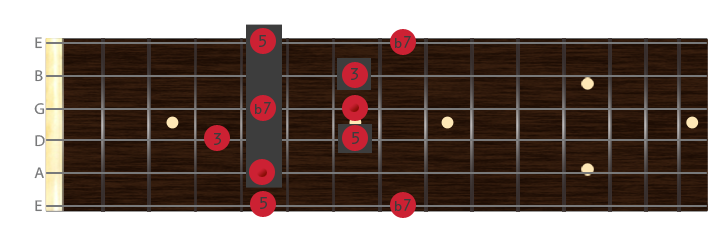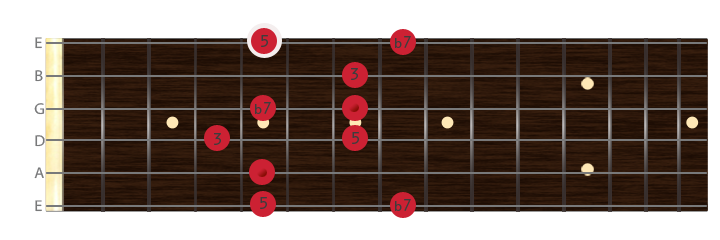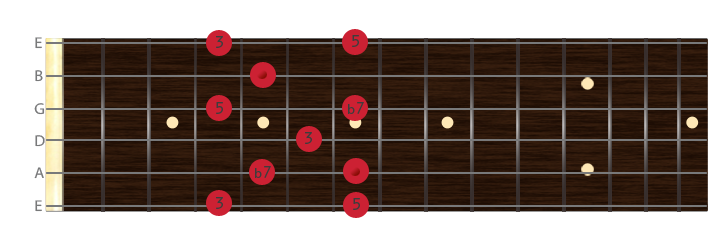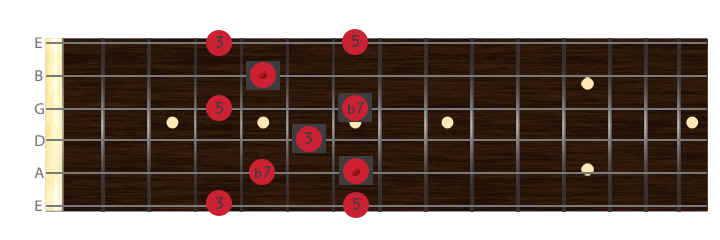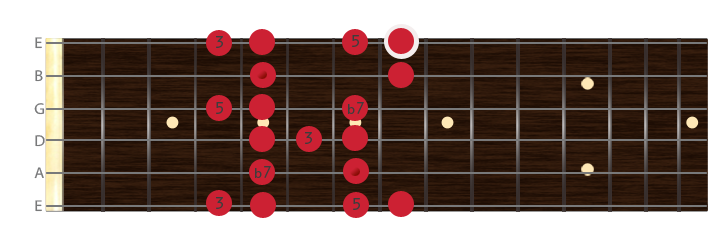12 Bar Blues Solo
Diatonic 7 arpeggio Pattern
Blues Solo
Typically the Minor Pentatonic scale is used to play a blues solo over the 12 Bar Blues because of the note affiliation to the I VI V chord progression. Taking this a step further additional notes coming from the Blues scale and even the Major Pentatonic scale can also be selectively used too.
Adding to that, creating arpeggios of the respective chords in a blues chord progression and using these notes selectively in a lead line will achieve greater melodic respect of the chord. This will involve using certain specific ‘target notes’ on chord changes to set up the transition.
The target notes can have a particular significance around the V chord position in the blues sequence as the V chord plays different roles one of which is setting up the sequence for the turnaround.
Definition of arpeggio
An arpeggio is a musical technique where notes in a chord are played or sung in sequence, one after the other, rather than ringing out simultaneously. An alternative translation of this term is “broken chord.”
Bring more melody and harmony to a solo by selectively combining notes from the minor pentatonic scale and the dominant 7 arpeggio of the respective chord. Use a shared note or ‘target note’ to link the chord changes.
More on the 12 bar...edit
The Origins of the Blues and its Influence
The blues started, perhaps after the end of the American Civil War, though it is not clear, and the rhythmic, call-and-response style of music arose from African-Americans and black communities in the deep south. The music and lyrics were work songs, songs that described one’s hardships, and heartbreaks, especially as a black person in the southern states and across the country.
The blues music genre produced a number of great artists such as B.B. King, Muddy Waters, and more. Even today, the blues plays a big role in pop music and continues to influence the next generation of aspiring musicians. As every guitar player may know, there comes a time in their learning where they will eventually, somehow, find an interest in the blues, especially the 12 bar blues.
What is the 12 Bar Blues?
The 12 bar blues is technically a chord progression, and has been used in music for over a century. To understand the form, one must first understand the basics of musical key structures and scales.The 12 bar form, as stated above, only used the I – IV – V chords of a key. When speaking of, for example, the key of E, this refers to the E major key. So which notes are in E major? The notes of an E major scale are below:
E F# G# A B C# D#
This means that the E at the very beginning is the I chord, the F# is the II chord, and the G# is the III chord, and so on. But for the 12 bar blues, we only need the I – IV – V, which, in the case of the E major scale is: E – A – B.
Okay, now that we have the notes down, we have to figure out which chords to play. For chords in the key of E major, it goes like this:
Emaj – F#min – G#min – Amaj – Bmaj – C#min – D#min
And remember, we only need the I – IV – V chords, which are Emaj – Amaj – Bmaj.
So what does this mean? This means that the 12 bar blues consists of 12 bars, or measures, and a great way to think about it is to split up the chords into 3 groups of 4 bars. So, to play the 12 bar blues in the key of E, we’ll play the I chord four times, then the IV chord twice, then back to the I two more times, and so on.
This is what the 12 bar blues will look like in the key of E major:
Emaj – Emaj – Emaj – Emaj
Amaj – Amaj – Emaj – Emaj
Bmaj – Amaj – Emaj – Emaj
The great thing about this is that the 12 bar form is changeable and you can insert any key you want into this formula and it will be the same. Some guitarists even like to change it up a little and add a little turnaround at the very end to spice it up. Sometimes the final bar is the V chord. It’s up to you to have fun and experiment!
Twevle Bar Blues Chord Sequence
The first eight bars toggle between the I and VI chords.
| I | IV | I | I | IV | IV |
|---|---|---|---|---|---|
| Bar 1 | Bar 2 | Bar 3 | Bar 4 | Bar 5 | Bar 6 |
Watch the V chord
It goes between both the I & VI chords & sets up the turnaround.
| I | I | V | IV | I | V |
|---|---|---|---|---|---|
| Bar 7 | Bar 8 | Bar 9 | Bar 10 | Bar 11 | Bar 12 |


